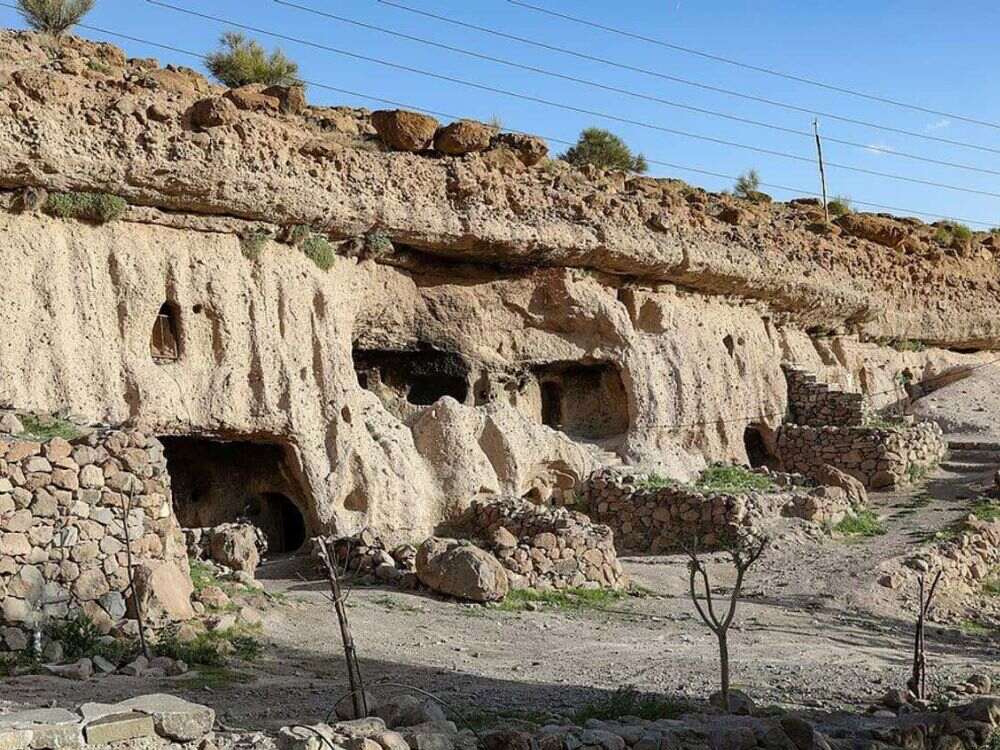These Ancient Homes Have Stood the Test of Time
It’s human nature to find or build a place to stay, a habit that dates back to the caveman era. Globally, some structures are not only architectural marvels but are still intact. Some humans lived in caves, making them their homes, while others constructed houses from stones.
Let’s look at some of the oldest buildings that still stand today.
Sassi di Matera: Italy
In the Basilicata region of Italy, Sassi di Matera is evidence of life in the Old Stone Age era. Reports suggest people occupied these houses in 7000 BC, and many lived until the 1960s.

Source: Etsy/Pinterest
It might be difficult to believe, but this structure consists of calcarenite rock. Following redevelopment by the Italian government, these dwellings now serve as restaurants, hotels, and shops.
Knap Of Howar: Scotland
The Knap of Howar is a must-mention when discussing archaic houses. This stone house dates back to the Neolithic era and is among the oldest dwellings in Europe. Archaeological findings suggest humans occupied the area for nearly 900 years.

Source: Wikimedia Commons
On this farmstead sit two circular towers 1.6 meters high with doorways that lead directly to the sea. Interestingly, even today, these structures remain solid and intact.
Jarlshof: Scotland
One ancient dwelling that has seen various human settlements over the years is the Jarlshof in Scotland. This place has witnessed men from the Neolithic era, the Bronze Age, the Iron Age, the Vikings, and the Medieval period.

Source: Nigel Duncan / Wikimedia Commons
Remains from 2500 BC were discovered at this site. Interestingly, this ruin remained hidden until the 19th century, and only after a storm washed part of the shore did these old structures become visible.
Meymand: Iran
Some of the most fascinating cave houses still standing since the Stone Age are in Meymand, Iran. There is a 12,000-year-old town with descendants from over 3000 years ago. Archaeologists determined the age of this settlement using stone fragments found in the cave.

Source: Ninara / Wikimedia Commons
Meymand serves as a reminder of the rich cultural history of the region. Even today, many people live in this UNESCO-listed area.
Mousa Broch: Scotland
Scotland is a land rich in history, evident in the historical landmarks littered nationwide. Iron Age roundhouses are incredibly well preserved, and these large stone structures have been part of many Norse sagas. It’s nice to see the stories were not just folktales around a campfire.

Source: Otter / Wikimedia Commons
If you travel to Scotland, be sure to make a pit stop here.
Roman Lighthouse: England
The impact of Roman architecture can still be seen in England today. Despite their brief occupation, the Romans left a lasting impression on London’s landscape and other country areas. One remarkable example is this lighthouse, whose enduring nature testifies to its impressive engineering.

Source: Chris McKenna / Wikimedia Commons
Though the weather has taken its toll on the structure, it is awe-inspiring to think about what a remarkable feat it must have been to build it.
St. George Monastery: Palestine
The Monastery of Saint John and George of Choziba is full of history and activity. It began as a cave network serving as a home for hermits until it became a monastery in the 500s. Sadly, the magnificent site underwent several demolitions and reconstructions due to war and other nefarious acts.

Source: Daliborka Mijatovic/Pinterest
Today, it’s inhabited by Greek Orthodox monks who do a fantastic job looking after the church.
Saltford Manor House: England
England is renowned for its ancestral homes, many of which have undergone numerous renovations and lost their original appearance. However, Somerset’s Saltford Manor House is a rare gem that has maintained its historical integrity since 1148.

Source: Rick Crowley / Wikimedia Commons
Despite its age, the house has never been without occupants, making it England’s oldest continually inhabited home. This is a remarkable feat, considering the political, socio-economic, and cultural changes the country has undergone over the past 873 years.
Acoma Pueblo: USA
The Anasazi people built incredible houses in New Mexico around 1150 AD, which are still inhabited today. These structures are so well-preserved that they could be mistaken for modern neighborhoods. In fact, the Acoma Pueblo is considered the oldest continuously inhabited site on the continent.

Source: Scott Catron / Wikimedia Commons
The remarkable feat of keeping a settlement alive for over 800 years is awe-inspiring when you consider the challenges faced by those who lived there throughout history.
